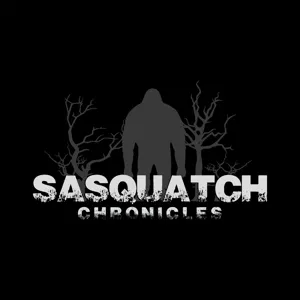Podcast Summary
Insights from Squarespace for business growth and the science of red snow: Squarespace offers valuable insights and analytics for businesses to optimize their website and marketing strategy. Meanwhile, red snow is a natural phenomenon caused by the absorption of certain colors, reminding us of the complexities of the natural world.
Squarespace not only provides a platform for creating and hosting websites, but also offers valuable insights and analytics to help businesses grow. By using Squarespace's Insights tool, users can identify their site's performance trends, popular products or content, and effective marketing channels. This information can then be used to optimize the website and develop a successful marketing strategy. Meanwhile, on a completely different note, we also learned about the science behind red snow. Snow is typically white due to the scattering of all colors in the visible spectrum. However, snow can turn red due to the absorption of certain colors. This phenomenon is not new, but it is intriguing and can serve as a reminder of the natural world's complexities. So, whether you're looking to enhance your online business or expand your knowledge of the natural world, Squarespace and the science of red snow have something to offer. For a free trial of Squarespace, visit squarespace.com/stuff and use the offer code STUFF to save 10% on your first purchase. And for more fascinating insights, check out the article from House Stuff Works and Mark Mancini about the science behind red snow.
Red Snow: A Natural Wonder Caused by Green Algae: Red snow, a natural phenomenon, is caused by green algae and gives snow its distinctive red color. Throughout history, it has fascinated people and continues to be a source of wonder and scientific study.
Red snow, a phenomenon that has intrigued people throughout history, is caused by green algae called Clamidinus nevalus. This algae gives snow its red color, and as it melts, red water flows and even creates red waterfalls. Famous figures like Charles Darwin have observed this phenomenon, and by the mid-19th century, people had figured out the cause. However, red snow can also have reddish or pinkish hues due to Saharan dust, but that's not the type of red snow we're talking about. Red snow is a natural wonder that can be found all over the world, and it's a fascinating example of how nature can surprise us. The ancient Romans, including Pliny the Elder, wrote about red snow, and throughout history, it has been a source of fascination and wonder. Even today, scientists continue to study this phenomenon, and it serves as a reminder of the beauty and complexity of the natural world.
Kid-friendly social media and creative website design: Zigazoo allows kids to create and engage in moderated video content, while Squarespace's Fluid Engine offers a flexible, customizable website design experience with added features for individuals and businesses.
Zigazoo is a kid-friendly social media platform where children can create and engage in fun, moderated video content without the negativity and privacy concerns often associated with other social networks. Meanwhile, Squarespace's Fluid Engine offers an unparalleled creative experience for individuals and businesses, enabling them to design and customize websites with ease, flexibility, and access to various features, including online sales and asset libraries. Additionally, Chlamydomonas, a type of green algae, is known for its cold-loving properties and small size, but recent discussions have focused on the phenomenon of red snow caused by this microorganism.
High-altitude algae produce Astaxanthin for survival: Astaxanthin, a red pigment produced by high-altitude algae, acts as a sunscreen and aids in their survival during warm seasons, allowing them to thrive in extreme conditions.
There is a unique type of algae, found in high-altitude snow fields, which produces a red pigment called Astaxanthin during warm seasons. This pigment acts as a sunscreen, protecting the organisms from excessive solar radiation. During the winter, these algae go dormant and wait for the snow to melt before blooming in the wet snow. When they bloom, they turn the snow red, creating a semi-translucent, puddle-like substance resembling blood. This red pigment helps the algae thrive and take over the snow once it gets an initial foothold. If these green algae did not produce Astaxanthin, they would not be able to survive in such extreme conditions. This red snow is not only visually striking but also plays a crucial role in the survival of these organisms.
Algae blooms on snow are accelerating glacier melting: Algae blooms on snow, due to their red color, absorb more solar radiation and cause a 5% to 15% increase in glacier melting rates, which is significant for climate change
Algae blooms on snow, which absorb more solar radiation than white snow due to their red color, are accelerating glacier melting rates. This feedback loop, where the algae cause more snow to melt, leading to more algae growth, has been going on but gained attention in a 2016 report published in Nature. The report, led by researchers at the University of Leeds, revealed a 5% to 15% increase in glacier melting rates due to the darker algae on the snow surface. This is significant because Arctic snow melt plays a crucial role in climate change. Prior to this study, climate models did not consider red snow blooms, but the research was compelling enough to change that. This natural phenomenon, while not new, is now recognized as an important factor in the acceleration of glacier melting in a warming world.
Red snow and its impact on climate predictions: Red snow, caused by algae blooms in melting glaciers, affects climate predictions and should not be consumed, despite reports of a watermelon-like smell.
Red snow, a phenomenon caused by algae blooms in melting glaciers, is an important factor to consider when making predictions about glacial melt and its impact on the environment. This feedback loop is now being included in climate models as a variable, as ignoring it could lead to inaccurate predictions and potential consequences such as seawalls not being built in time. Additionally, despite some reports of a watermelon-like smell associated with the red pigment, it's important to note that this smell is not caused by the snow itself and should not be consumed. This information was discussed on the podcast "Stuff You Should Know" and emphasized by guest expert Mark Mancini. So, when considering the impacts of climate change and the environment, keep in mind the significance of red snow and the importance of not consuming it.





